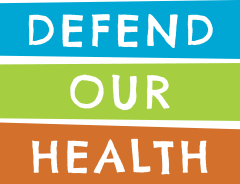When Toxic Sludge Hits the Fan
March 28, 2019 | Uncategorized |
New PFAS Pollution Concern Spurs Ask
for Senate Committee Investigation
In their classic critique of the public relations industry, Toxic Sludge is Good For You!, authors John Stauber and Sheldon Rampton take apart propaganda-for-hire tactics. In one chapter, they detail how a devilish euphemism transformed the dumping of sewage sludge into the beneficial reuse of “biosolids.”
What the name change failed to cover up, however, are the toxic chemicals, including per- and polyfluoroalkyl substances (PFAS), which often end up in our food and water after toxic sludge is spread on farm fields as a fertilizer. (Sludge is the leftovers from wastewater treatment; Some PFAS used in products by consumers and business are washed down the drain and end up creating toxic sludge.)
Last week, the tragic story of a Maine dairy farmer ruined by PFAS pollution brought home the persistent threat of toxic sludge. Unsafe levels of PFAS were found in cow’s milk, drinking water and hayfields at Stoneridge Farm. Sewage sludge had been spread on the fields for more than twenty years, including paper mill waste for at least one year.
Fred Stone’s cow’s produced milk with the highest levels of PFOS ever reported, globally. Consumers were exposed for up to thirty years before the contamination was discovered. Farmer Stone called the experience “a bloody nightmare,” and faces financial ruin because he can no longer sell his milk.
Unfortunately, farmer Stone is not alone. Toxic sludge spreading has already been linked to PFAS contamination of milk in Alabama and surface water pollution in North Carolina. According to the U.S. Environmental Protection Agency, sewage sludge is spread on the land in all fifty states.
This concern expands the growing national PFAS crisis, which until now has been driven by alarm over drinking water contamination by military bases, chemical plants, and other industrial factories.
What PFAS contamination still lurks undetected beneath farmlands across America?
That’s one question raised by the Environmental Health Strategy Center in its letter to the U.S. Senate Committee on Environment and Public Works. This Committee will hold an oversight hearing on the federal response to the risks of PFAS, scheduled for Thursday, March 28th at 10am Eastern.
Since the use of PFAS chemicals and sludge spreading have both been common practices for more than forty years, state and federal actions are urgently needed to protect public health and our food and water supplies. A protective action agenda should include:
- Test the fields. Which farm fields ever accepted sewage sludge or industrial waste? Those farmlands and their agricultural products must to tested to find PFAS contamination, halt human exposure, and clean up the toxic mess.
- Stop the sludge: All sludge spreading should be halted until it’s shown to be free of unsafe levels of PFAS. In response to the dairy farm PFAS crisis, the Maine Department of Environmental Protection adopted sludge standards to limit three PFAS chemicals. Maine just announced that sludge generators are now required to demonstrate compliance with those limits before sludge can be spread again. That’s a good beginning that EPA and other states should follow, expanding to other PFAS.
- Phase-out PFAS in products. Pollution prevention remains the best way to avoid contaminating sludge with PFAS in the first place. Since a variety of consumer, commercial and industrial products contain PFAS, they should be replaced with safer alternatives to prevent PFAS from being washed down the drain. This includes the newer PFAS, such as the four-carbon PFBA, which in one study was found at the highest level in sludge and the six-carbon PFHxA, which was most frequently detected among the eight PFAS measured.
No farmer should ever have to suffer like Fred Stone and his beloved cows. And no family should drink milk or water contaminated with PFAS. To truly solve the PFAS crisis, we have to grapple with these ugly truths about toxic sludge management, and replace the entire class of PFAS chemicals with truly benign alternatives.
